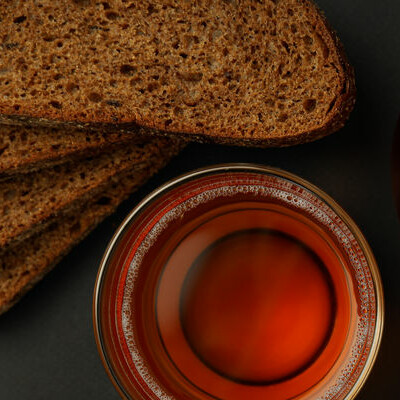Origin
Malt is produced from sprouted grains, typically barley. However, wheat and rice grains may be used as well.
Malt obtained from barley grains has traditionally been used as the principal ingredient in the brewing process, and as a minor ingredient for baking applications. Barley, unlike wheat, is very versatile. It has the ability to adapt to unfavorable climate and soil conditions, becoming an economical source for malt production.1
Commercially available wheat or rice malt is rather rare. The higher costs associated with wheat production, and different crop conditions of rice, make them expensive sources for malt production—especially when there’s a fully developed malt industry based on barley grains.
Function
The difference between non-diastatic malt and diastatic malt is the enzyme content or activity. Diastatic malt is not kilned, but dried at low temperatures to preserve its enzymatic activity.
Non-diastatic malt is produced for its sweetening and coloring effect. The enzymes have been killed/inactivated through the application of additional heat during kilning (temperatures higher than 160°C). This kind of malt is high in maltose, a reducing sugar, which aids in the Maillard reaction. When added to formulas it mainly functions as a flavoring and crust coloring aid.
Application
Non-diastatic malts for baking applications are available commercially in a variety of forms including:
- Flour
- Extract
- Syrup (20% moisture)
- Dried syrup2
Syrups and extracts are prepared by the extraction of malt and are specially suitable for the brewing industry. The extract is then concentrated to a syrup or spray-dried to powder form which is normally used for bakery products formulation.
In bagels production, this malt is usually added to the boiling water to provide a good color and aroma to the bagel.
If used as a sweetener, and no table sugar is included in the formulation, it is important to account for its relative sweetness/sucrose equivalent. Commercial Non-diastatic malt presentations, such as syrups, are usually 40% as sweet as sucrose. So, their use may require adjustments in the scaling step to achieve desired flavor in the finished product that equivalent to the sweetness when table sugar is used.3
Malted grains are a rich source of carbohydrates obtained from starch (mono, disaccharides and dextrins), and this pool of sugars will be present in the dough if the Non-diastatic malt is intended for baking applications. Since it is rich in sugars, the crust color of bread will turn out darker than normal.4
Non-diastatic malt extract is commonly added as an ingredient in the production of cream crackers. Here, the Non-diastatic malt extract can be used at 2% (dry flour weight) in the dough side (using the Sponge and Dough System), or at 1.5% (using the Straight dough System).5
Suggested usage levels of non-diastatic malt in yeast-leavened bakery products6
| Product | Baker’s % | Dough System | NDM form | Comments |
| 100% whole wheat bread | 2 | Straight dough | Syrup | Table sugar also added |
| Challah | 0.6 | Straight dough | Syrup | Table sugar also added |
| Milk bread | 1 | Straight dough | Syrup | Table sugar also added |
| American rye bread and rolls | 2.5 | Straight dough | Syrup | Either use molasses or non-diastatic malt syrupTable sugar not included |
| French bread | 1 | Pre-ferment (Poolish) | Syrup | Table sugar not includedNon-diastatic malt syrup added at pre-ferment side |
| White pan bread | 0.5 | Sponge and dough | Syrup | Table sugar also added at dough sideNon-diastatic malt added at sponge side |
| Vienna bread | 1 | Straight dough | Syrup | Table sugar also added |
| Italian white pan bread | 0.5 | Straight dough | Syrup | Table sugar not included |
References
- Arendt, E.K., and Zannin, E. “Barley.” Cereal Grains for the Food and Beverage Industries, Woodhead Publishing Limited, 2013, p. 155.
- Schwarz, P., and Li, Y. “Malting and Brewing Uses of Barley.” Barley Production, Improvement, and Uses, Blackwell Publishing Ltd., 2011, pp. 501–502.
- O’Donnell, K. “Bakery Formulations and Ingredients.” Bakery Production Handbook, Xlibris Publishing LLC, 2016, pp. 55–57.
- Cauvain, S.P. “Raw Materials.” Baking Problems Solved, 2nd edition, Woodhead Publishing: Elsevier Ltd., 2017, p. 40.
- Manley, D. “Cream Crackers.” Manley’s Technology of Biscuits, Crackers and Cookies, 4th edition, Woodhead Publishing Limited, 2011, pp. 283–284.
- Gisslen, W. Professional Baking, 7th edition, John Wiley & Sons, Inc., 2017, p. 123–180.

